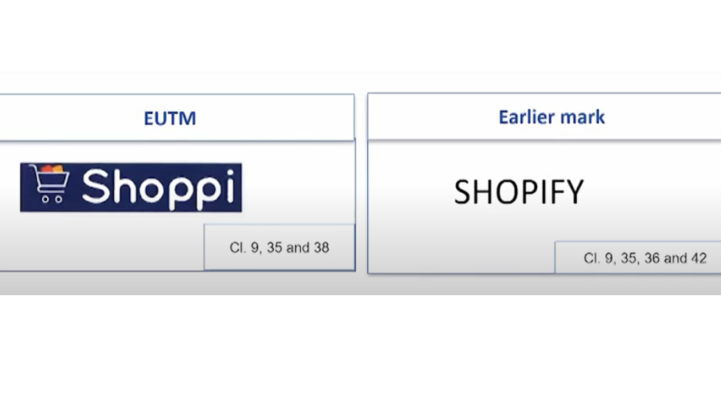The “Case law bit: Shoppi” on the EUIPO Academy platform addresses the trademark dispute involving Community trademark “Shopify” and its registered classes 9, 35, 36 and 42. The case analysis emphasizes the criteria for assessing the likelihood of confusion (LOC) between trademarks, particularly highlighting the importance of the distinctiveness of earlier marks.

In this particular case, the Board of Appeal noted that the term “shop” is non-dominant and weak, thereby having minimal impact on the overall assessment of LOC. Trademarks with weak distinctive character, such as those containing the common term “shop,” require a high degree of similarity to establish likelihood of confusion.
The trademark dispute analysis concluded that despite the identity or similarity of the goods and services, the weak distinctiveness of the “Shopify” Community trademark and the public’s high level of attention mean that there is no likelihood of confusion between “Shopify” and “Shoppi”.
There is a likelihood of confusion (including association) if the public might believe that the goods or services in question, in case they bear the marks in question, come from the same undertaking or, as the case may be, from economically-linked undertakings. If a large portion of the relevant public for the goods or services at issue is perplexed as to their origin, this is sufficient. As a result, there is no need to prove that all current or potential users of the relevant goods or services are likely to be confused.

